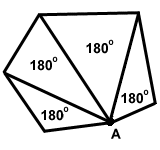Please wait while we process your payment
If you don't see it, please check your spam folder. Sometimes it can end up there.
If you don't see it, please check your spam folder. Sometimes it can end up there.
Please wait while we process your payment

By signing up you agree to our terms and privacy policy.
Don’t have an account? Subscribe now
Create Your Account
Sign up for your FREE 7-day trial
By signing up you agree to our terms and privacy policy.
Already have an account? Log in
Your Email
Choose Your Plan
Individual
Group Discount
Save over 50% with a SparkNotes PLUS Annual Plan!
 payment page
payment page
Purchasing SparkNotes PLUS for a group?
Get Annual Plans at a discount when you buy 2 or more!
Price
$24.99 $18.74 /subscription + tax
Subtotal $37.48 + tax
Save 25% on 2-49 accounts
Save 30% on 50-99 accounts
Want 100 or more? Contact us for a customized plan.
 payment page
payment page
Your Plan
Payment Details
Payment Summary
SparkNotes Plus
You'll be billed after your free trial ends.
7-Day Free Trial
Not Applicable
Renews April 30, 2025 April 23, 2025
Discounts (applied to next billing)
DUE NOW
US $0.00
SNPLUSROCKS20 | 20% Discount
This is not a valid promo code.
Discount Code (one code per order)
SparkNotes PLUS Annual Plan - Group Discount
Qty: 00
SparkNotes Plus subscription is $4.99/month or $24.99/year as selected above. The free trial period is the first 7 days of your subscription. TO CANCEL YOUR SUBSCRIPTION AND AVOID BEING CHARGED, YOU MUST CANCEL BEFORE THE END OF THE FREE TRIAL PERIOD. You may cancel your subscription on your Subscription and Billing page or contact Customer Support at custserv@bn.com. Your subscription will continue automatically once the free trial period is over. Free trial is available to new customers only.
Choose Your Plan
This site is protected by reCAPTCHA and the Google Privacy Policy and Terms of Service apply.
For the next 7 days, you'll have access to awesome PLUS stuff like AP English test prep, No Fear Shakespeare translations and audio, a note-taking tool, personalized dashboard, & much more!
You’ve successfully purchased a group discount. Your group members can use the joining link below to redeem their group membership. You'll also receive an email with the link.
Members will be prompted to log in or create an account to redeem their group membership.
Thanks for creating a SparkNotes account! Continue to start your free trial.
We're sorry, we could not create your account. SparkNotes PLUS is not available in your country. See what countries we’re in.
There was an error creating your account. Please check your payment details and try again.
Please wait while we process your payment

Your PLUS subscription has expired
Please wait while we process your payment
Please wait while we process your payment

Introduction to Triangles
Of all geometrical shapes, triangles are probably the most important. The
most remarkable and important property of triangles is that any polygon can
be split up into triangles simply by drawing diagonals of the
polygon. This
fact forms the basis for understanding why the interior angles of
polygons
add up to 180(n-2) degrees. The
interior
angles of a triangle always add up to 180 degrees. This can easily be proved by
the congruence of alternate interior
angles. From a given vertex of a polygon
with n sides, (n-3) diagonals can be drawn. Every diagonal drawn from a
single vertex of a polygon creates one triangle within the polygon, except for
the last diagonal, which creates two triangles. For each triangle created
within the polygon, 180 degrees of interior angles are created. (Of course the
angles were there before the diagonals were drawn, but now they can be
measured.) So n-4 diagonals of a polygon create one triangle each, and one
diagonal, the last one to be drawn, creates two triangles. This means that n-2
triangles can be drawn into a given n-sided polygon. This is why the sum of all
interior angles of an n-sided polygon is always 180(n-2) degrees. See the
figure below for how the process looks.

This is only one way that triangles help demonstrate properties of polygons in general. There are many more. Triangles can be categorized many different ways, allowing us to focus on special characteristics of certain triangles that we can create within a polygon. This is the usefulness of triangles. For now, it's good just to know what they are. The Geometry 2 SparkNotes discuss all of the ways to use triangles.
Please wait while we process your payment

